Table of Contents
National Symbols Of India: India, often referred to as the land of diverse cultures and traditions, boasts a rich heritage and history. To instill a sense of pride and understanding in the younger generation, Indian parents emphasize the importance of the country’s national symbols. These symbols are more than just representations; they are like special signs that show what makes a country unique. In India, these symbols are super important. They remind everyone about India’s history, culture, and make people feel proud to be Indian. These symbols serve as reminders of India’s identity and help in strengthen a love for their motherland. This blog aims to introduce and explain about national symbols of India with their importance.
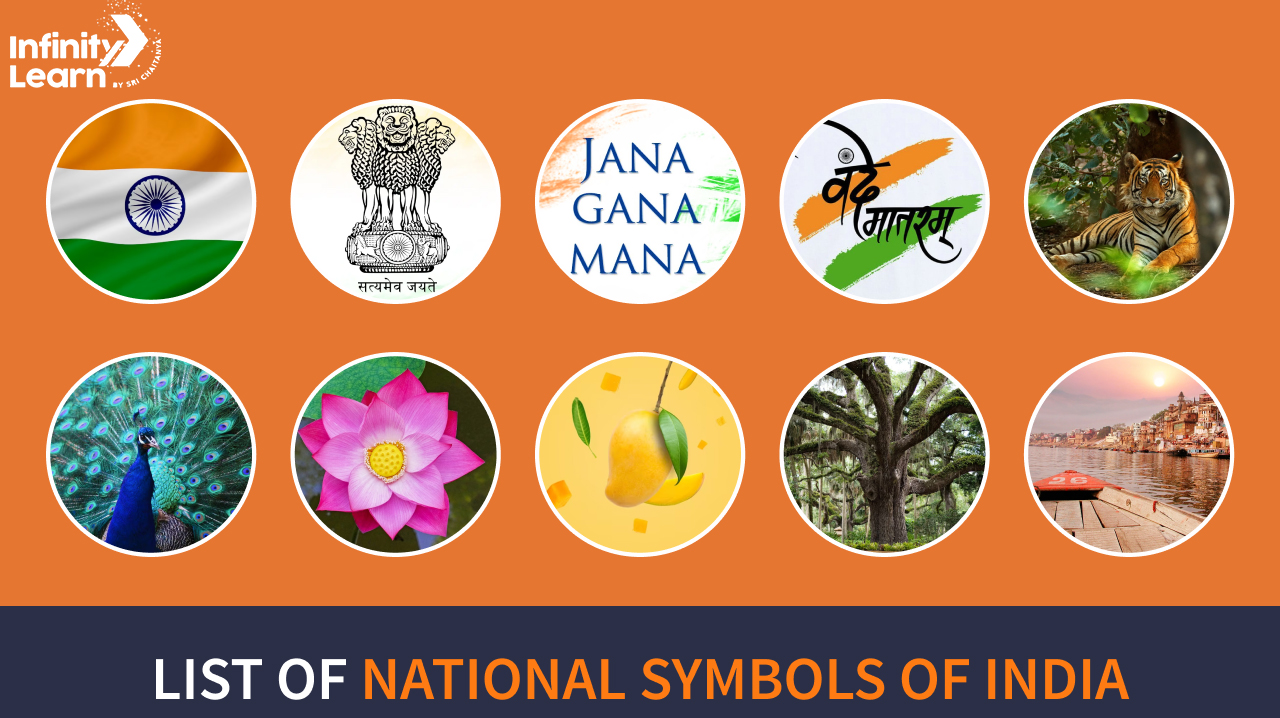
The Importance of National Symbols Of India
Each symbol reflects a story, a heritage, and a shared identity, resonating with the hearts of millions. They’re more than just pictures; they’re like threads stitching together India’s different cultures, showing how diverse and strong the country is to everyone.
- National symbols play a important role in representing the cultural heritage and identity of a country. In the case of India, these symbols hold great significance and are deeply rooted in its history and traditions.
- The Bengal Tiger holds a significant place as India’s national animal. This amazing animal stands for strength, speed, and toughness, just like India itself.
- The national emblem of India is another iconic symbol that holds immense significance. It features a lion standing on one side, symbolizing power, courage, and sovereignty. The emblem also includes an image of four lions facing different directions, representing unity in diversity.
- India’s national tree is the Banyan tree. Known for its expansive branches and deep roots, it represents longevity, wisdom, and endurance. This tree holds cultural significance as it is often associated with spiritual practices and considered sacred by many.
- The Indian flag stands as a powerful symbol of pride and freedom. Comprising three stripes, saffron symbolizes courage and sacrifice, white signifies peace, and green represents growth. Additionally, at the center lies the navy blue Ashoka Chakra, embodying notions of progress and righteousness.
- Moving beyond animals, trees, flags, India also has notable national bird (Indian Peacock), fruit (Mango), flower (Lotus), anthem (“Jana Gana Mana”), song (“Vande Mataram”), river (Ganges), sport (Hockey), dance form (Bharatanatyam) as its official symbols that hold cultural significance for Indians.
17 National Symbols of India with Additional Information
National symbols are like special signs that represent a country. In India, these different National Symbols of India are of great importance. All national symbols of India with names represent a mosaic of cultural, historical, and ecological facets. They remind everyone about India’s history, culture, and make people feel proud to be Indian.
| Symbol | Name | Additional Information |
|---|---|---|
| National Flag | Tricolor (Tiranga) | Represents courage (saffron), peace and truth (white), and faith and chivalry (green), with the Ashoka Chakra symbolizing the law of dharma. |
| National Emblem | State Emblem of India | Features the Lion Capital of Ashoka, depicting four Asiatic lions standing back to back, symbolizing power, courage, pride, and confidence, with the Dharma Chakra (wheel of law) at its base. |
| National Anthem | Jana Gana Mana | Composed by Rabindranath Tagore, it’s a hymn in praise of India, highlighting its diversity and unity. It was adopted as the national anthem on January 24, 1950. |
| National Song | Vande Mataram | A hymn to the motherland, composed by Bankim Chandra Chattopadhyay, expressing devotion and love for India. |
| National Calendar | Saka Calendar | Based on the Saka Era, widely used in India alongside the Gregorian calendar. |
| National Flower | Lotus | Symbolizes purity, beauty, and the eternal cycle of life, often associated with Indian gods and goddesses. |
| National Tree | Indian Banyan (Ficus benghalensis) | Represents longevity and immense medicinal properties; its aerial roots symbolize the interconnectedness of all living beings. |
| National River | Ganges (Ganga) | Considered sacred, providing spiritual sustenance to millions, and revered for its significance in Hinduism. |
| National Fruit | Mango | Known as the “King of Fruits,” symbolizing abundance, prosperity, and happiness; it holds cultural and religious significance in India. |
| National Animal | Bengal Tiger | Embodies strength, agility, and grace, serving as a symbol of India’s wildlife heritage and conservation efforts. |
| National Bird | Indian Peafowl (Peacock) | Renowned for its vibrant plumage, representing grace, beauty, and elegance, it’s also associated with Indian myths and legends. |
| National Aquatic Animal | Ganges River Dolphin | An indicator of a healthy river ecosystem, the Ganges River Dolphin symbolizes the conservation of aquatic life and ecosystems. |
| National Reptile | King Cobra | Represents power and mysticism, often intertwined with Indian mythology and revered for its role in maintaining ecological balance by controlling rodent populations. |
| National Currency | Indian Rupee (₹) | Features various symbols and languages, reflecting the country’s cultural diversity and historical heritage. |
List of National Symbols of India with Name and Pictures
Check out these 17 National Symbols of India in English, perfect for Students and Kids to learn about. Each symbol tells a special story about India’s amazing culture and history.
NATIONAL ANTHEM OF INDIA
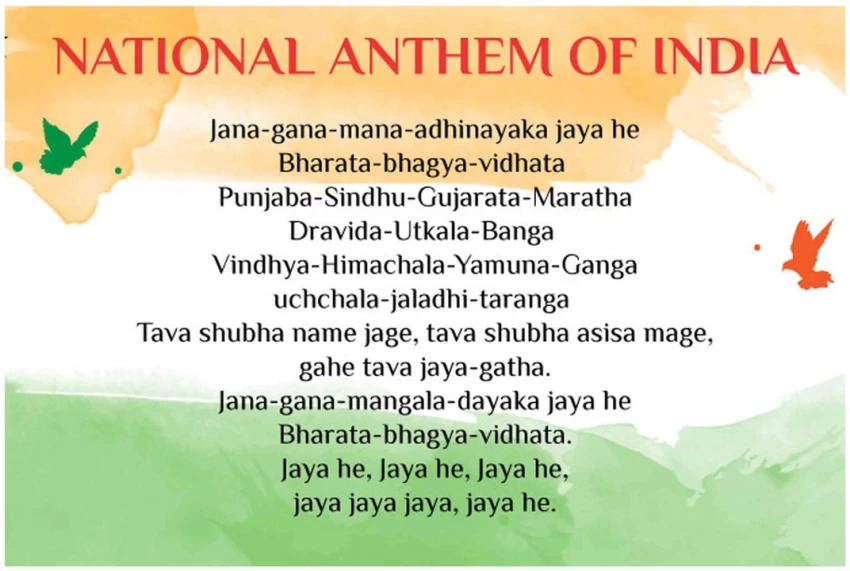
The national anthem of India, ‘Jana Gana Mana,’ is a composition by Rabindranath Tagore. It is sung in Bengali and evokes feelings of patriotism and love towards the nation.
NATIONAL FLAG OF INDIA
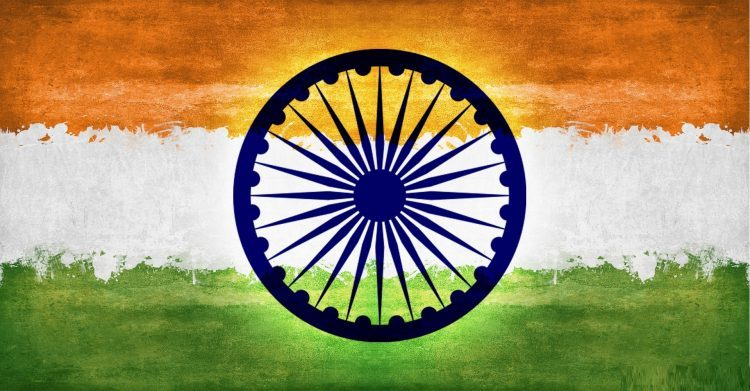
The Indian national flag, known as the Tricolor, have three horizontal stripes of saffron, white, and green. The topmost saffron stripe represents courage and sacrifice, the middle white stripe symbolizes purity and truth, while the bottom green stripe signifies fertility, growth, and auspiciousness. In the center lies the Ashoka Chakra, a 24-spoked wheel that represents progress and righteousness.
NATIONAL SONG OF INDIA
The national song of India is “Vande Mataram.” It was written by Bankim Chandra Chattopadhyay in Sanskritized Bengali and is a tribute to the nation, glorifying its beauty, culture, and heritage. The song holds significant cultural and patriotic importance in India.
NATIONAL ANIMAL OF INDIA

The majestic Bengal Tiger holds the title of India’s national animal. Tigers are known for their strength, agility, and grace. They are fierce predators and are native to various regions of India. The national animal represents the country’s wildlife conservation efforts and the need to protect endangered species.
NATIONAL BIRD OF INDIA

The Peacock, with its vibrant feathers and graceful dance, is India’s national bird. It is known for its beauty and elegance, the peacock symbolizes immortality, love, and prosperity. It is often associated with Indian mythology and is considered sacred.
NATIONAL CURRENCY OF INDIA
The currency of India is the Indian Rupee, denoted by the symbol “₹” and the ISO code “INR.” It’s issued and regulated by the Reserve Bank of India (RBI). The Indian Rupee comes in various denominations, including coins (paise) and banknotes of different values. The currency’s design features prominent historical figures, symbols, and motifs representing India’s rich heritage and diverse culture.
NATIONAL EMBLEM OF INDIA
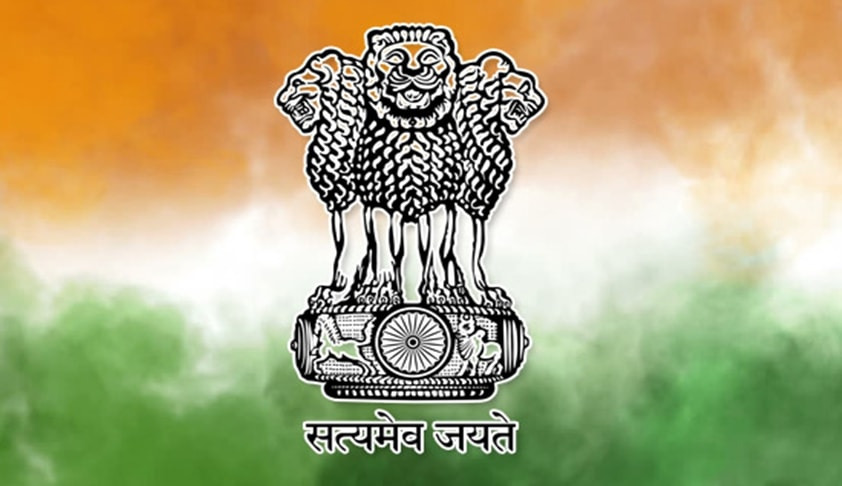
Ashok Chakra is the National Emblem of India. The national emblem of India is a representation of the 4 Lions Emblem India Capital of Ashoka, which is preserved in the Sarnath Museum in Uttar Pradesh. The emblem consists of four lions standing back to back, symbolizing power, courage, pride, and confidence. It also features the Dharma Chakra, a wheel with 24 spokes, which represents righteousness.
NATIONAL PLEDGE OF INDIA
The national pledge of India is a promise taken by citizens to uphold unity, integrity, and harmony among all. It emphasizes the country’s diverse cultures and traditions, aiming for a just and inclusive society. The pledge encourages individuals to contribute to the nation’s progress and strive towards a peaceful and united India.
NATIONAL CALENDAR OF INDIA
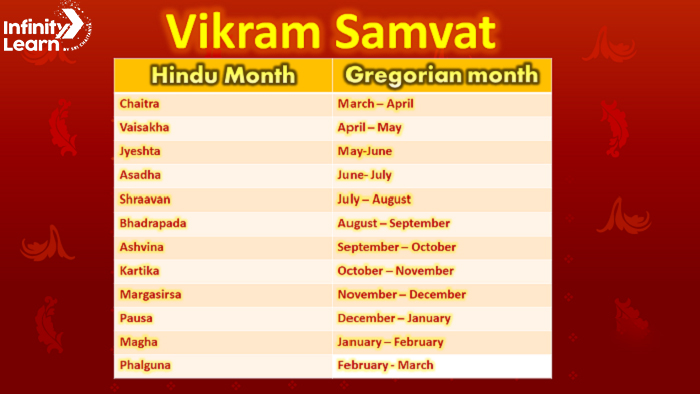
India follows the Gregorian calendar for official purposes, but it also has its traditional calendars, like the Hindu calendar, used for religious and cultural events. The Hindu calendar bases its festivals and auspicious days on the positions of the moon and the sun. While the Gregorian calendar is widely used in daily life, the Hindu calendar has cultural significance and guides numerous religious celebrations and rituals in India.
NATIONAL SPORT OF INDIA
The national sport of India is field hockey. It’s a game which is played with sticks and a ball on a field. India has a special love for this sport because it’s been really good at it for a long time. Between 1928 and 1956, the Indian hockey team reached its peak by clinching Olympic gold medals in six consecutive years, marking an unparalleled achievement in that era. The country has won lots of Olympic gold medals in hockey, making everyone proud. So, field hockey is like India’s favorite sport that brings joy and pride to many people.
NATIONAL RIVER OF INDIA
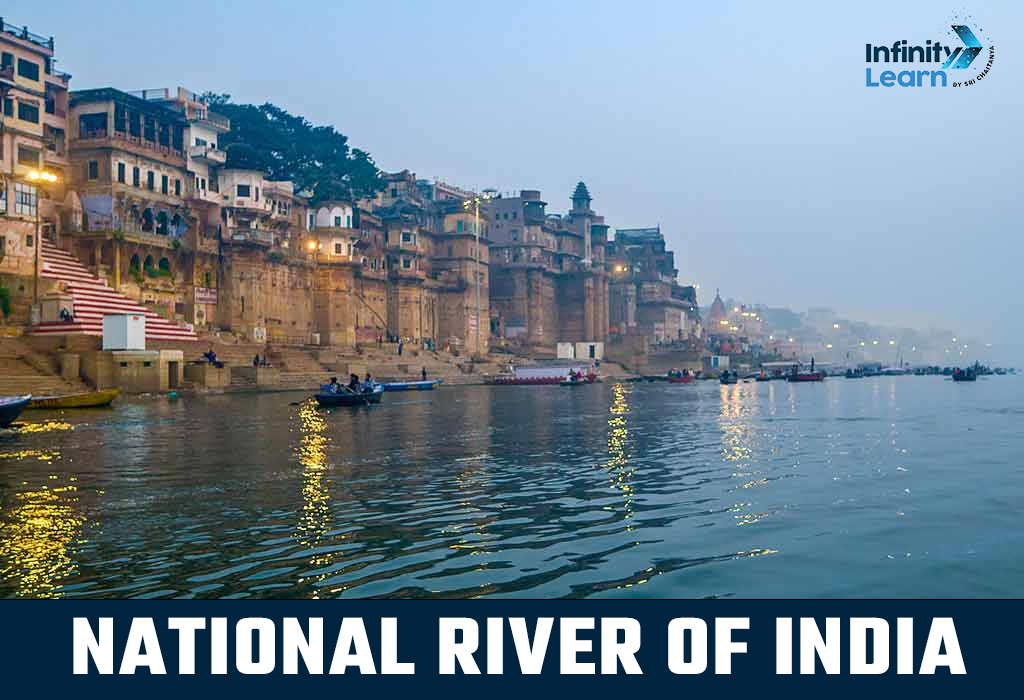
The national river of India is the Ganges. It’s incredibly important to the country’s culture and daily life. People consider it holy and use its water for religious ceremonies. Besides that, it helps farmers by providing water for crops. The Ganges is like a lifeline, supporting many people and diverse plants and animals along its banks. That’s why it’s India’s national river.
NATIONAL FRUIT OF INDIA
The Mango, known as the king of fruits, proudly holds the title of India’s national fruit. Its delightful taste, sweet scent, and diverse types make it stand out. Symbolizing abundance, fertility, and prosperity, the mango has been a king in Indian art, literature, and cooking for ages.
NATIONAL TREE OF INDIA
The Banyan tree is India’s national tree, recognized for its huge, sprawling canopy. It stands for lasting life, strength, and everlastingness. This tree shows how everything is connected, which is a big deal in Indian stories and beliefs.
NATIONAL FLOWER OF INDIA
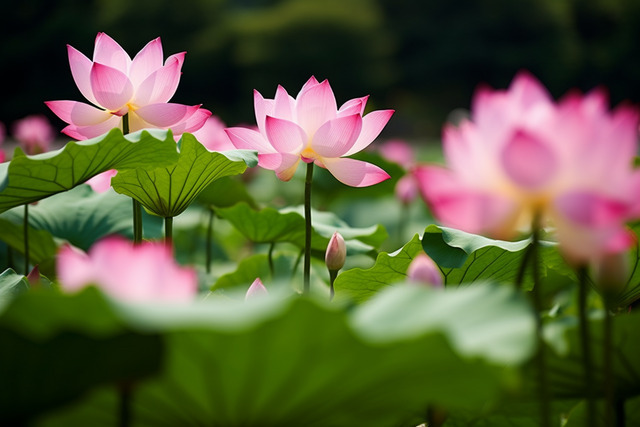
The Lotus, a symbol of purity and beauty, is India’s national flower. It represents spiritual enlightenment, divine perfection, and the unfolding of the soul. The lotus is eminent in Indian art, culture, and religion, reflecting India’s ancient heritage.
NATIONAL HERITAGE ANIMAL
The national heritage animal of India is the Indian Elephant (Elephas maximus indicus). The Indian Elephant earns the designation of the heritage animal owing to its cultural, historical, and ecological significance in India. For centuries, the Indian Elephant has actively contributed to Indian traditions, religious ceremonies, and cultural practices. It garners admiration for its strength and gentle nature, holding a revered status in Indian culture as a symbol of greatness and wisdom.
NATIONAL AQUATIC ANIMAL OF INDIA
The Gangetic River Dolphin (Platanista gangetica), often referred to as the Ganges River Dolphin, is the national aquatic animal of India. This unique and endangered species inhabits the Ganges, Brahmaputra, and their tributaries. The Gangetic River Dolphin symbolizes the purity of the holy rivers and the ecological richness they support. Its designation as the aquatic animal aims to raise awareness about the conservation of rivers and their biodiversity
NATIONAL MOUNTAIN OF INDIA
The highest peak in India and the national mountain is Mount Kanchenjunga. Located in the eastern Himalayas, it stands at an height of 8,586 meters (28,169 feet) above sea level. Kanchenjunga, named “Five Treasures of Snow” in Tibetan, is not just tall but also deeply respected for its cultural and spiritual importance in the nearby areas.
It serves as a symbol of natural beauty, representing the majestic landscapes and rich biodiversity found in the Indian Himalayas.
OATH OF ALLEGIANCE OF INDIA
In India, the Oath of Allegiance signifies a commitment to the nation’s principles and values. It’s a national pledge taken with reverence, symbolizing loyalty to the country and its Constitution. This oath highlights the significance of being responsible in maintaining India’s unity, integrity, and democratic values.
National Symbols FAQ’s
What are the 17 National Symbols of India?
India has 17 national symbols, including the National Flag, National Emblem, National Anthem, National Song, National Bird, National Animal, National Flower, National Tree, National River, National Fruit, and others.
What do the National Symbols of India represent?
National symbols in India represent the country's identity, values, culture, and heritage. They evoke a sense of pride and unity among its citizens.
What are the names of 5 of the National Symbols?
Some of India's symbols include the National Flag (Tiranga), National Emblem (Lion Capital of Ashoka), National Anthem (Jana Gana Mana), National Song (Vande Mataram), and National Bird (Indian Peacock).
What are the national symbols and their roles?
National symbols play an important role in fostering patriotism, preserving cultural heritage, and unifying the diverse population of India. They serve as emblems of pride and identity.
What is the national emblem of India?
The national emblem of India is the Lion Capital of Ashoka, which depicts four Asiatic lions standing back to back mounted on a circular abacus. It symbolizes power, courage, and the historical legacy of India.
What is the national vegetable of India?
India's national vegetable is the Indian pumpkin, which grows widely throughout the country, adapting easily to different soil types and climbing effortlessly. It's popular for being budget-friendly due to its abundant produce and versatility in cooking. Its sweet flavor complements lentils, spices, and various vegetables, making it a staple in tropical Indian dishes. This vegetable thrives, especially in the hot seasons of the year.







